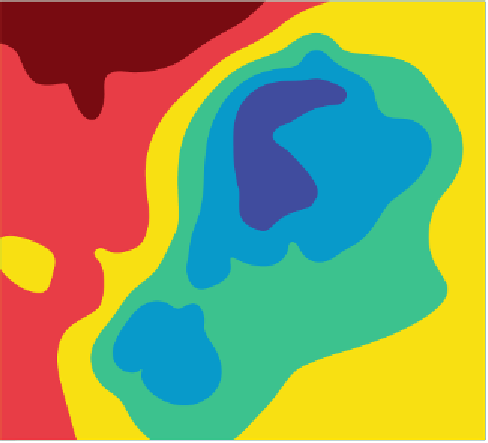Graphics Programs Reference
In-Depth Information
120
20
20
5
5
15
15
115
0
-15
-15
-10
-10
20
15
10
20
20
110
-20
-5
5
-25
20
-10
5
-15
15
-
5
-20
105
-25
-25
15
0
15
100
-15
-20
0
-20
-20
-10
−5
15
-10
95
-20
-5
-5
-15
−10
-15
-15
10
10
-10
-10
-10
10
-10
-10
-10
90
-15
−15
0
10
-5
-5
10
85
-10
-20
-20
-20
-15
−20
-10
5
-15
-15
80
-5
-10
−25
15
0
-15
-15
-15
75
−30
0
5
15
5
0
15
5
−35
70
420
425
430
435
440
445
450
455
460
465
470
Fig. 7.8
Filled contours of a data set gridded using a biharmonic spline interpolation. At the
location (450,105), very close control points with different
z
-values have been introduced.
Interpolation causes a paired low and high, which is a common artefact of spline interpolation
of noisy data.
data often cause unrealistic estimates. To illustrate these edge effects we
eliminate all control points in the upper-left corner.
[i,j] = find(data(:,1)<435 & data(:,2)>105);
data(i,:) = [];
labels = num2str(data(:,3),2);
plot(data(:,1),data(:,2),'ko')
hold on
text(data(:,1)+1,data(:,2),labels);
hold off
We again employ the biharmonic spline interpolation technique.
[XI,YI] = meshgrid(420:0.25:470,70:0.25:120);
ZI = griddata(data(:,1),data(:,2),data(:,3),XI,YI,'v4');









